The Canon EOS R6 is a full-frame mirrorless camera that features the latest incarnation of Canon’s classic 20 megapixel sensor. This offers an ISO range of between 100 and 102400, expandable to 204800, while maintaining low noise (levels of unwanted artefacts) into the mid- to high range of ISO settings.
Canon hasn’t followed the recent trend of ‘the more megapixels the better’, instead opting to keep the bigger pixels provided at 20MP, which works well very for astrophotography.
The camera’s magnesium alloy body is reassuringly sturdy and solid, weighing in at 680g, which is lighter than its mirrored, full-frame equivalent.
The Canon R series cameras use the new RF lens mount and a new range of RF lenses are available. However, with the use of an optional adaptor, purchased separately, the R series cameras are fully compatible with Canon’s EF and EF-S-type lenses.
Confused about ISO and aperture? Read our guide on how to use a DSLR camera.
This camera is on our list of the best cameras for astrophotography.

For regular Canon users, it’s good to see the company has maintained the familiar layout of previous models. The Mode Dial remains on top of the camera, allowing you to switch between modes in the dark with ease.
As with several of its predecessors, the R series also uses the touch screen as its main control surface, which we found simple to navigate, as long as we weren’t wearing gloves.
We were loaned two lenses for the review – a Canon 15-35mm f/2.8 L and Canon 24-240mm f4/6.5 – and a Canon EF-EOS R adaptor, which allowed us to use the camera with our 80mm refractor to test its performance on a selection of deep-sky objects.
The Canon EOS R6 arrived at full Moon, which gave us the perfect opportunity to try out one of its main features: the fast video capability.
The camera can shoot in 4K resolution at up to 25 frames per second (fps), but its party piece is a high-speed video option that can achieve in excess of 100fps, which is a highly respectable speed for lunar and solar imaging.
Movies are recorded in MP4 format, meaning they can be converted and read by most planetary-stacking software. One disadvantage is that the file size is restricted to 2GB in size, which limits video length.
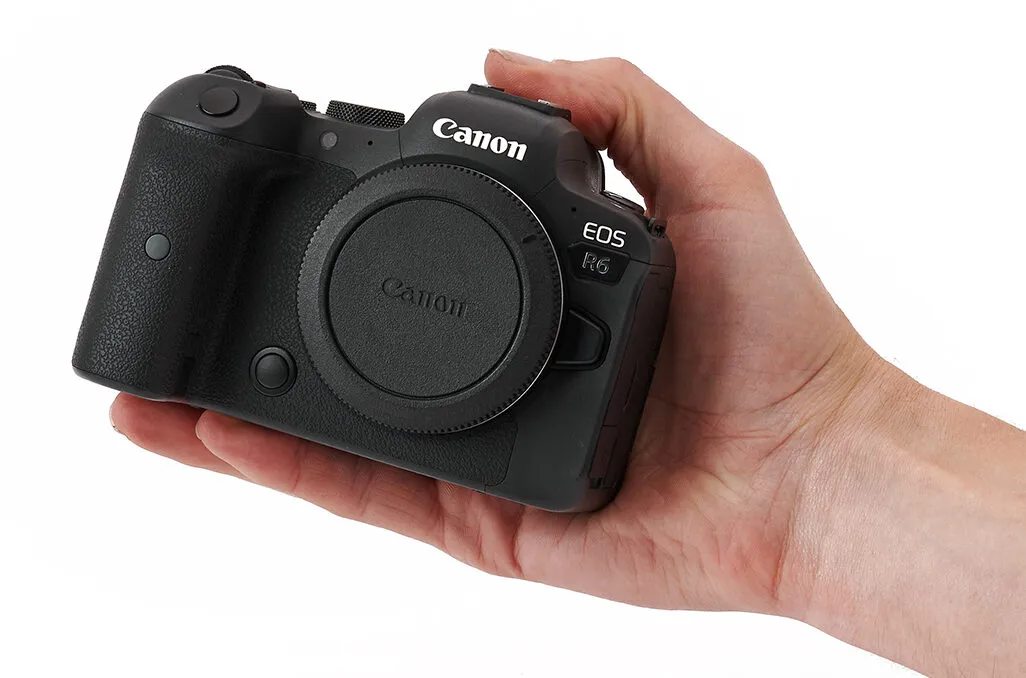
Thanks to the large high-resolution LCD screen and a two-stage zoom (5x and 10x), focus was achieved easily, and at higher ISO settings we found that even severely out of focus stars were easy to spot.
Partnered with a short focal length refractor, the Canon EOS R6 gave a wide field of view, which allowed us to capture large objects such as the Rosette Nebula, NGC 2244.
The process of finding and aligning on the Rosette Nebula was easy, and the star cluster in the centre was clearly visible in the ‘Live View’ screen.
Taking a short exposure at a high ISO revealed the faint nebulosity, while dropping the ISO to 3200 and taking a 30-second exposure gave a clean, low-noise image with clear detail visible.
To reduce the noise (unwanted artefacts) further, we decided to drop the ISO to 800 and left the camera running, taking 30-second exposures for two hours.
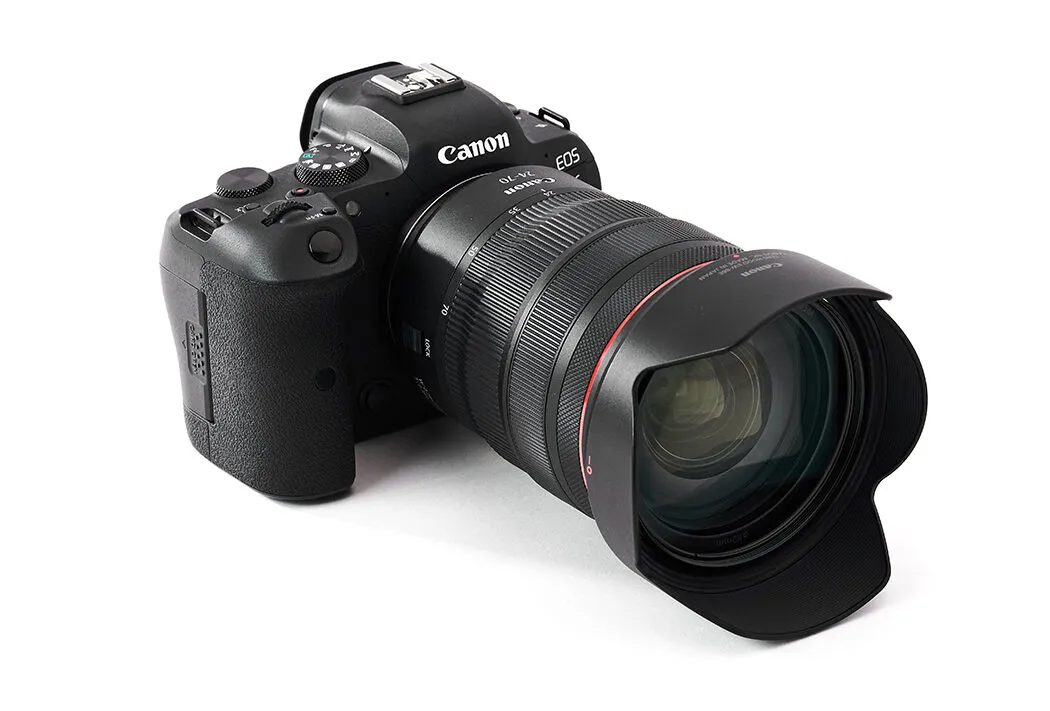
It was then a case of stacking the resulting images in Sequator – minus calibration frames – and then stretching and processing them in Adobe Photoshop.
Our resulting image was impressive for a camera that isn’t designed primarily for astrophotography. The Canon EOS R6 is not modified and still has infrared-blocking filters installed.
While this limited the hydrogen alpha (Ha) data, we picked up a surprising amount of good detail.
The EOS R6 really excelled when we captured the Milky Way with a wide-angle lens. Pairing the camera with the supplied Canon 15-24mm f/2.8 L lens, and then with our own Samyang 14mm f/2.8 lens, gave a beautiful wide field of view.
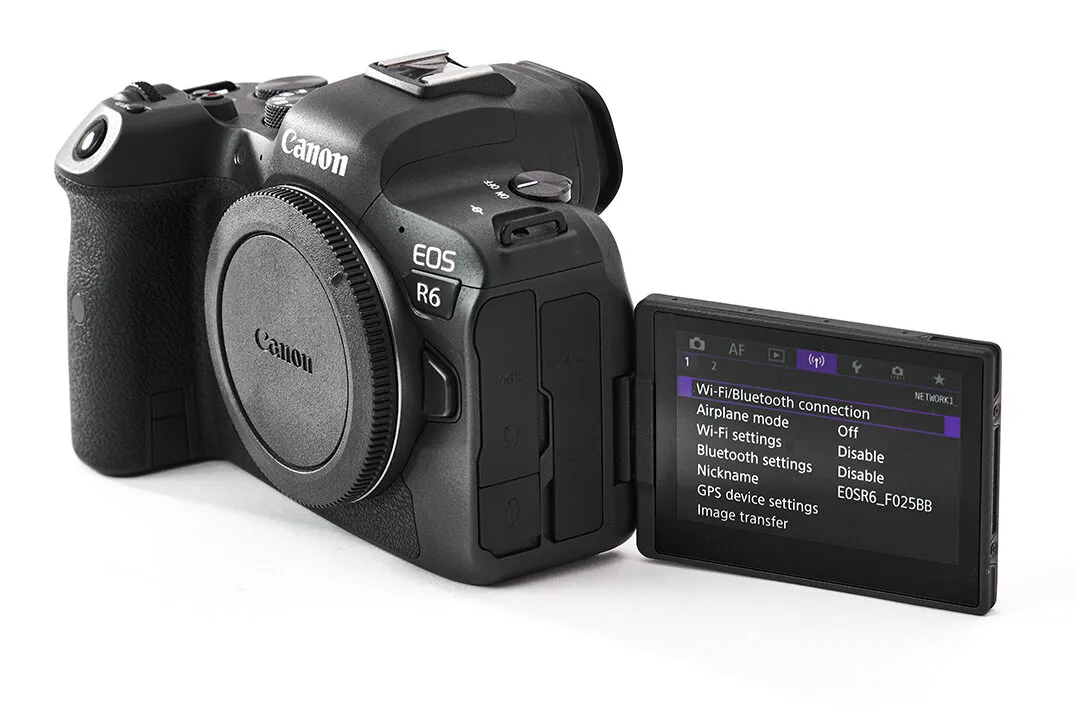
Undeniably, the Canon L series lens provided the best results, but the cheaper Samyang lens (with the Canon EF-EOS R adaptor) still gave very pleasing images – without any obvious vignetting, but with noticeably more curvature.
The RAW images we saw that were straight from the camera were impressively detailed, with the Milky Way’s structure clearly visible.
Overall, we found the Canon EOS R6 was rewarding to use on a wide range of astrophotography targets, and we felt it had the potential to be a reliable workhorse.
Indeed, the camera ticks a lot of boxes for both newcomers and avid DSLR users: while the EOS R6 performs well under dark skies, it also has plenty to offer for all occasions and abilities.
Canon EOS R6 sensor explained
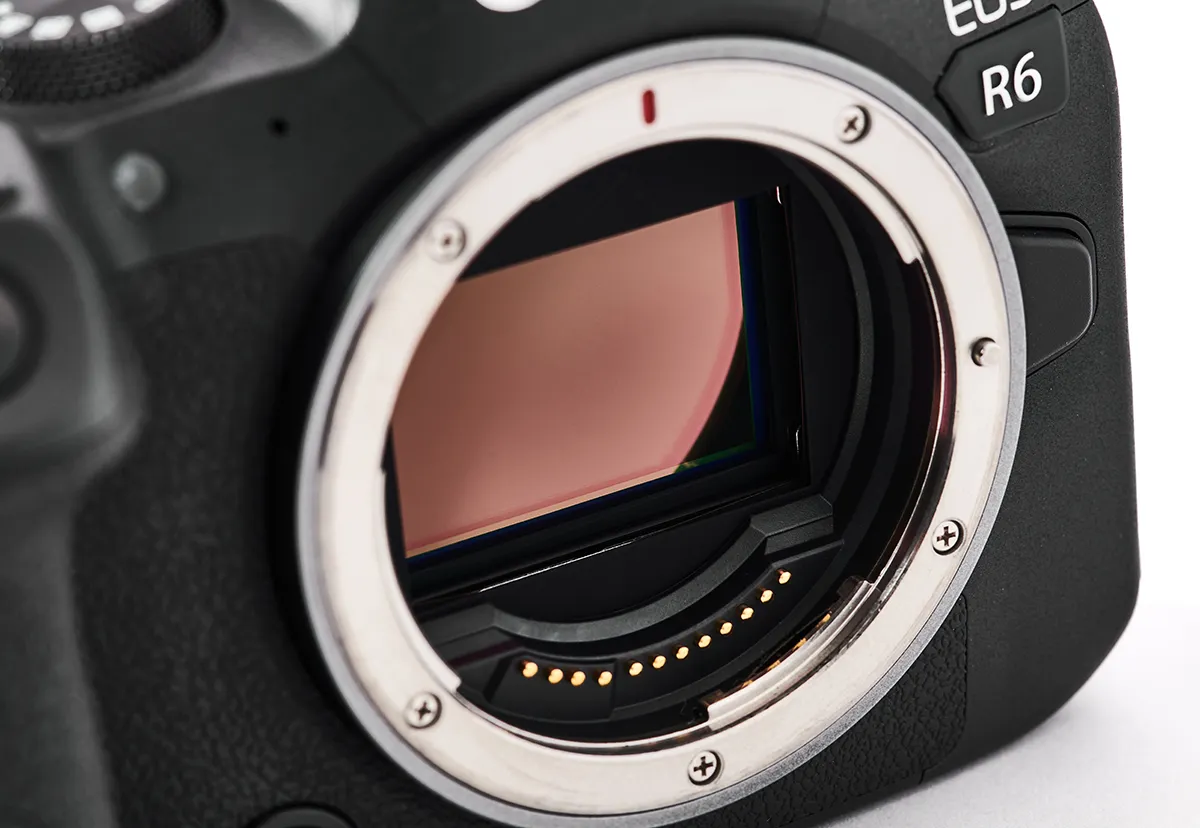
The EOS R6 has Canon’s latest 20 megapixel full-frame CMOS sensor, which boasts a greater than average ISO range that goes up to 204000 – most barely reach a quarter of this.
Images produced at this ISO are noisy (full of unwanted artefacts) and are not suitable to run at long exposures; so the ability to run short exposures at this setting allows for easy and quick target-alignment. It means that nebulosity becomes visible without waiting for a long exposure to finish.
The sensor comes into its own with wide-field astro imaging, as the Canon EOS R6 proves to be very sensitive in low light.
RAW images taken straight from the camera, using ISOs as low as 1600, clearly show details in the Milky Way.
Even when we pushed the ISO up to 6400 we found the images contained very little noise, making this an ideal setting for shorter, untracked night sky and Milky Way images.
This made the processing a breeze, with very little needed in the way of noise reduction or image manipulation in order to gain beautiful results.
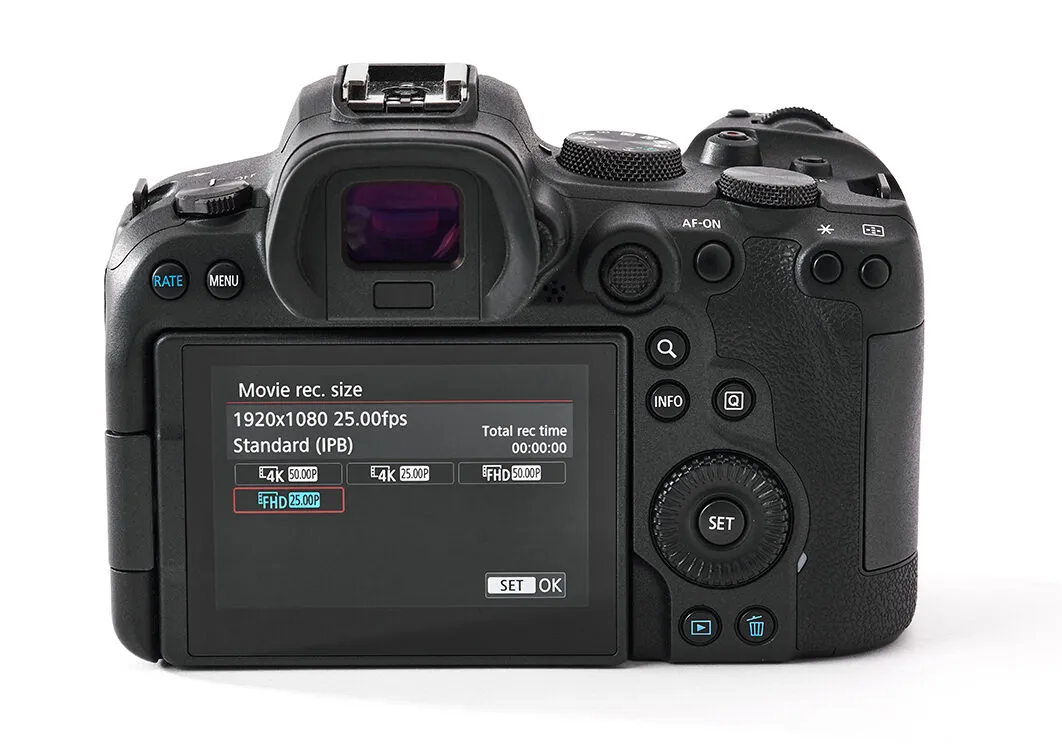
Canon EOS R6 best features
1
Video function
The video-capture mode allows for shooting up to 120 frames per second. This makes it a respectable option for lunar or solar imaging where other DSLR variants can struggle. The MP4 file can be easily converted for use in most stacking software. However, they are very large files.
2
Mirrorless camera
Canon’s R series cameras are mirrorless, so unlike traditional DSLRs the viewfinder is also a small LCD and displays exactly what the sensor is seeing. The big advantage of a mirrorless system for astrophotography is that it removes the chances of mirror shake and therefore reduces vibration and noise (unwanted artefacts) during image capture.
3
Articulated LCD screen
A large 3-inch, fully adjustable LCD screen allows you to adjust all the camera settings in one place. The brightness of the screen can be adjusted so that it doesn’t dazzle you or others in the dark, and its core menu layout is reminiscent of its classic Canon predecessors.
4
Touch screen
We found the touch screen to be very sensitive, allowing its use as a shutter with only the gentlest of touches. All the settings can be found easily and selected via the touch screen, without the need to press any physical buttons, helping to reduce the risk of camera movement.
5
Connectivity
The Canon EOS R6 has wi-fi and Bluetooth connectivity and it’s very simple to connect to via a phone. While both options allow for full exposure control, the camera is also fitted with a high-speed USB C port, allowing direct operation via a laptop and your own preferred imaging software.
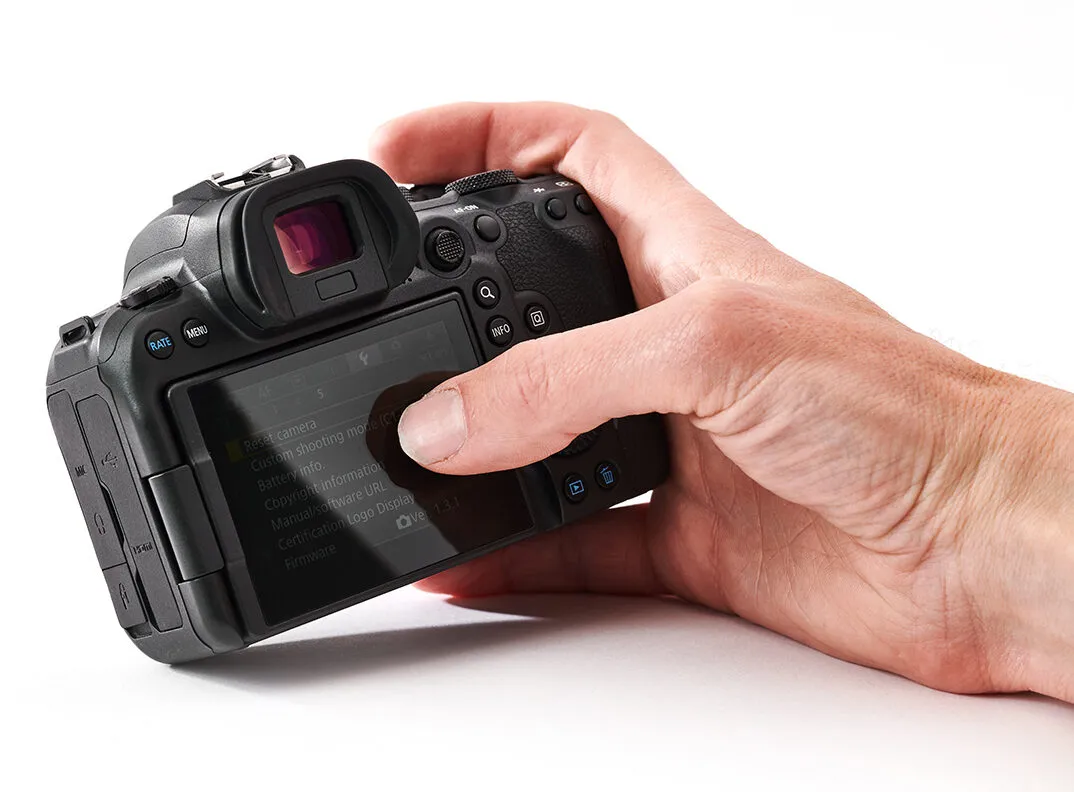
Vital stats
- Price £2,599.99
- Sensor 35.9mm x 23.9mm, 20MP full frame CMOS
- ISO range 100–102400, expandable to 204800
- Live View Magnify image by 5x and 10x for manual focusing
- High frame rate Full HD at 100fps
- Body size 138.4mm x 97.5mm x 88.4mm
- Weight 680g (without a lens)
- Supplier Canon UK
- Tel 020 7660 0186
- www.canon.co.uk/cameras/eos-r6
This review originally appeared in the July 2021 issue of BBC Sky at Night Magazine.
